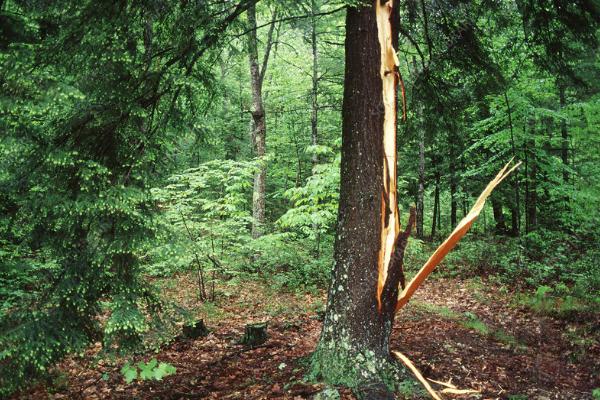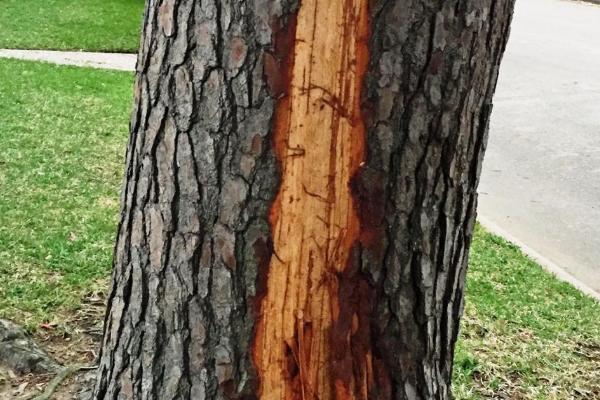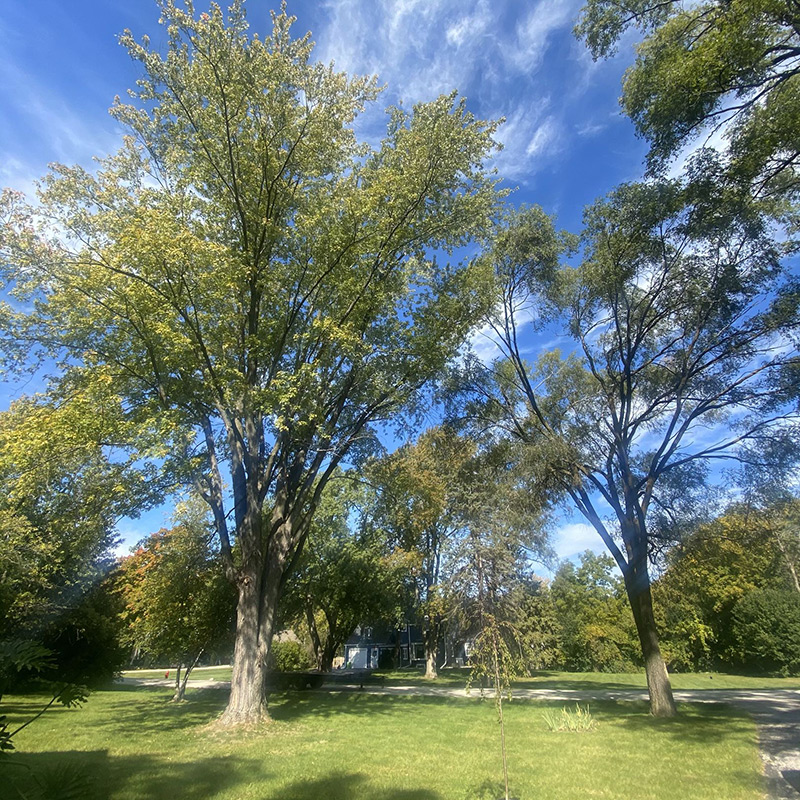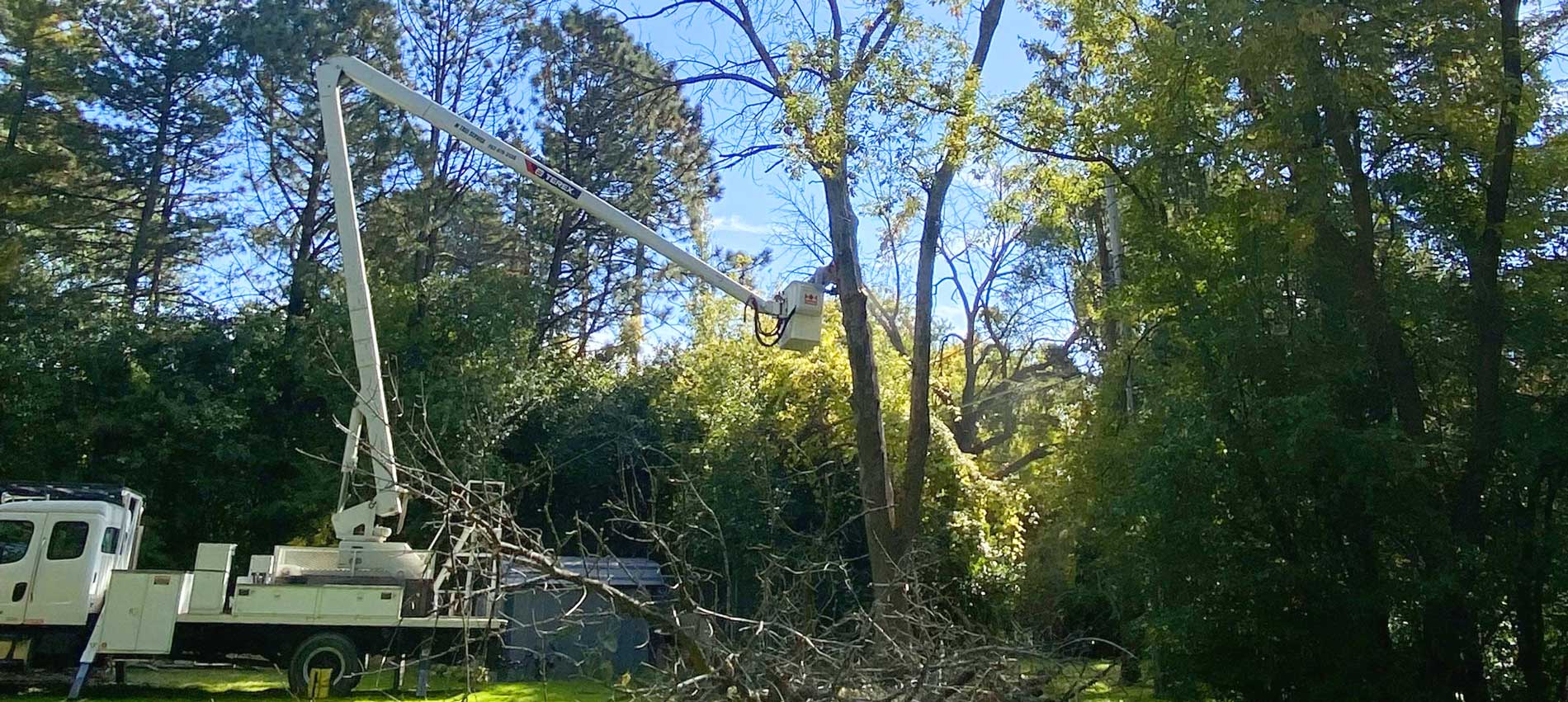Severe weather can wreak havoc on your trees. While most trees stand tall and resilient through most storms, an unexpected force can wreak havoc in an instant: lightning. Often romanticized in art and literature as a powerful force of nature, lightning strikes can have devastating effects on trees, leaving behind terrible scars or even invisible damage.
One of the most immediate and visible signs of a lightning strike on a tree is the presence of a charred, burnt area where the electrical current made contact. This scorch mark can range in size and severity. The size of the mark can vary based on factors such as the tree’s species, moisture content, and the intensity of the strike. In the worst cases, the heat generated by the lightning can ignite a fire within the tree or its surroundings, leading to further destruction or even contributing to forest fires, especially in dry conditions.
Beyond the visible scars, lightning can inflict insidious damage to a tree’s internal structure. The intense heat of the electrical discharge can vaporize moisture within the tree, resulting in steam explosions that rupture the bark and wood. These explosions create vertical splits or “lightning channels” within the tree, compromising its structural integrity. The tree’s ability to transport vital water and nutrients may be severely affected, potentially leading to its decline over time.
While some trees manage to survive a lightning strike and eventually recover, others may not be as fortunate. The severity of the damage can determine the tree’s fate. Some trees, despite being wounded, can heal over time, forming new layers of bark to seal off the damaged area. However, others may succumb to the trauma, unable to withstand the stress inflicted by the lightning.
However, even trees that initially survive a lightning strike are still in danger. The damage inflicted by lightning can weaken a tree, making it more susceptible to secondary stressors such as pests and diseases. With compromised structural integrity and reduced ability to defend itself, a tree becomes an easy target for opportunistic insects and pathogens. This vulnerability can lead to a slow decline, eventually resulting in the loss of the tree.
In the wake of a lightning strike, forest management practices can play a crucial role in mitigating the damage and aiding in the recovery of affected trees. Prompt assessment of the tree’s condition by arborists can help determine the extent of the damage and the best course of action. Pruning away damaged branches and providing proper care, such as watering and fertilization, can support the tree’s recovery process.
Navigating tree services after severe weather, including lightning strikes, windstorms, and heavy snow, requires a combination of caution, expertise, and proactive measures. Keep up with tree maintenance to mitigate future risks and ensure the safety and beauty of your landscape for years to come.




How can I tell if my tree is beyond repair?
If more than 50% of the tree’s canopy is damaged or if the trunk shows signs of structural instability, it may be irreparable.
Is it safe to attempt tree pruning on my own?
For safety reasons and optimal results, it’s recommended to hire trained professionals for tree pruning, especially after severe weather events.
Can damaged trees pose a risk of falling later?
Yes, storm-damaged trees are often weakened and can pose a risk of falling, especially during subsequent storms or high winds.
What should I do if a tree falls on my property during a storm?
Ensure everyone is safe, then assess the damage and contact tree removal professionals if necessary. Avoid attempting to remove the tree yourself.
How long does it take for storm-damaged trees to recover?
The recovery time depends on various factors such as the extent of damage, tree species, and environmental conditions. It can range from several months to several years.